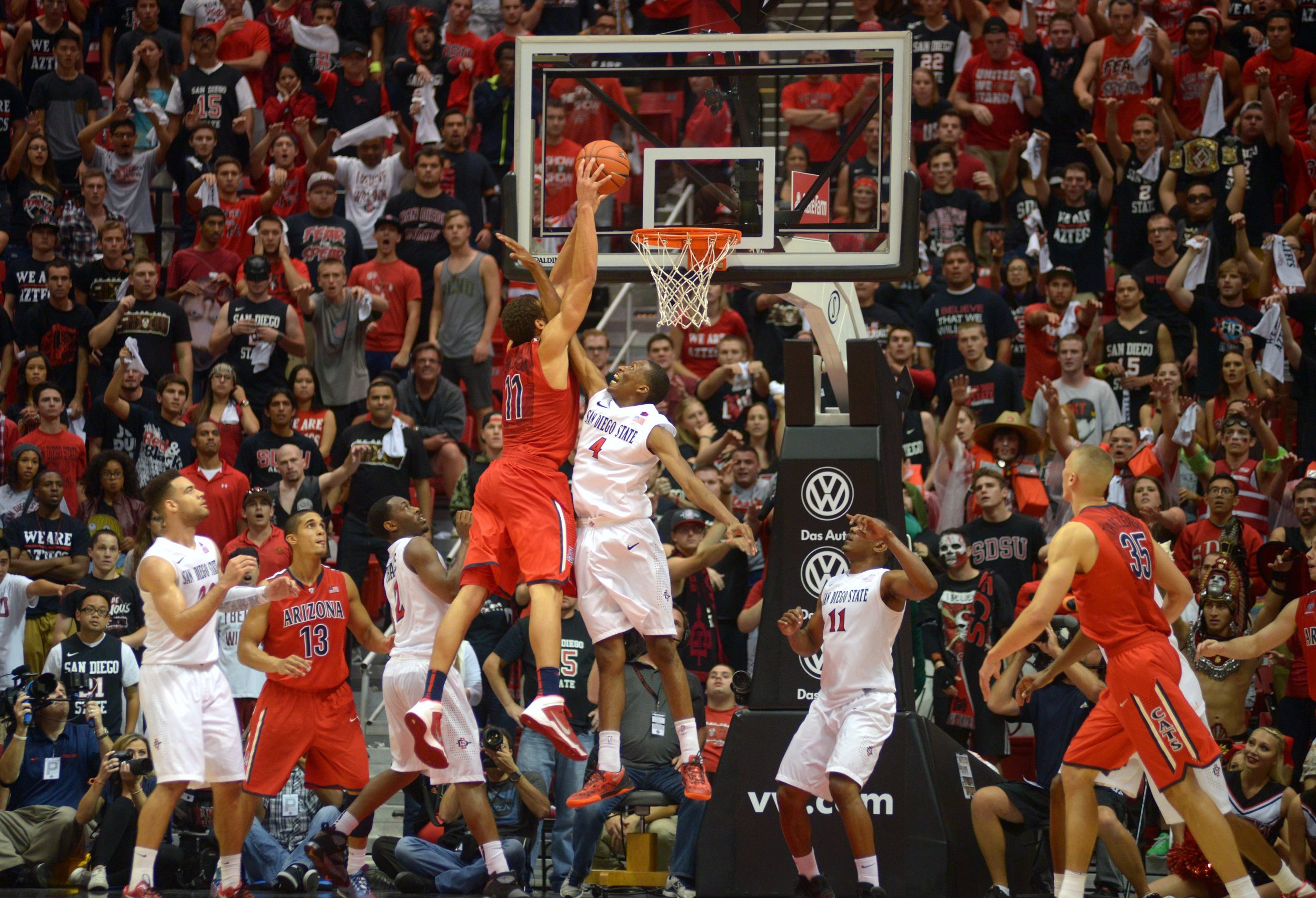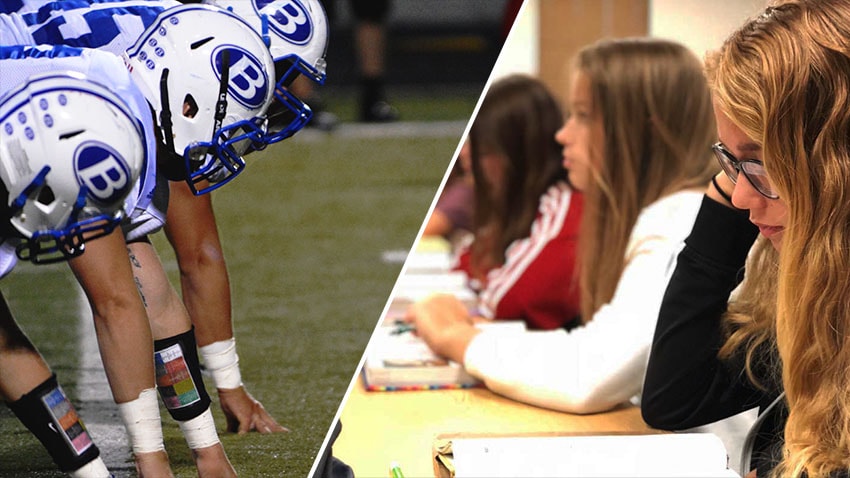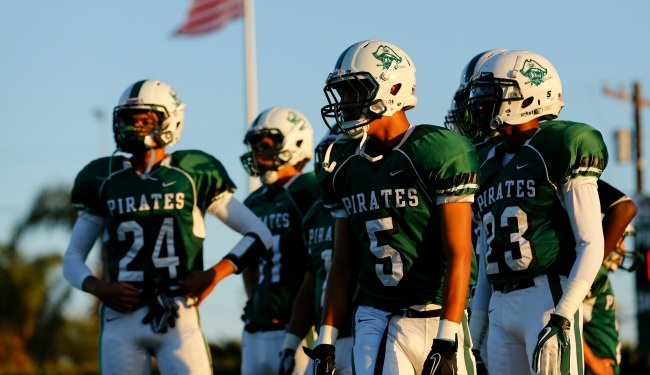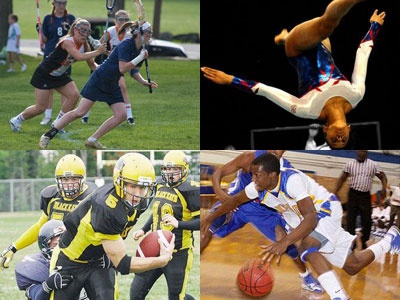NOTE: This essay appeared in the December 10 edition of Inside Higher Ed
In 1997, I published a book titled The Successful College Athletic Program: The New Standard in which I wrote about “The Deal” between the “student-athlete and the institution. Specifically, I argued that the agreement in which student-athletes provide athletic performance in exchange for the opportunity to earn a well-balanced athletic, academic and social experience resulting in a meaningful degree that prepares them for the next 50 years of their lives was, in principle, fair. As a former college basketball player and former associate commissioner the Southeastern Conference, I saw enough evidence of this in the players I interacted with that I truly believed it.
Given how much the landscape of intercollegiate athletics has changed since 1997, The New Standard might as well have been published in 1887.
Everything about “big time” college athletics has exploded. From budgets to revenue generated, from media exposure to public scrutiny and, in a corresponding fashion, the pressure to win and the 24/7, 12-months-a-year athletic demands on players. The result? There is no longer any question that the “education” athletes are receiving as their share of the bargain at far too many universities has been woefully inadequate and in some cases, fraudulent. Clearly, it is time to restructure the athlete/institutional agreement in a way that reflects the realities of major college athletics in the 21st century.
Before proceeding, we must recognize a fundamental reality. There is no longer any point in referring to the young people who play football and men’s basketball at the major college level as “student-athletes”. Given the amount of time they are required to spend on athletics, for all practicality, they are, in fact, professionals. Further, their ability to keep their scholarships (pay) hinges upon their ability to perform athletically (play). And a professional athlete is one who plays for pay. So let’s move beyond the notion that they are amateurs and can ever be so again. That is pure fantasy.
So how can the deal be re-structured to be equitable in the wildly commercialized, highly professionalized, media-driven world of college athletics in the 21st century?
Let’s start with the basics, the benefits provided and costs covered for the athlete while on campus. Fortunately, many of these basic, on-campus needs are beginning to be met with proposals for increased cost of attendance and living stipends and the possibility of multi-year scholarship guarantees that have been granted through recent NCAA changes. That’s a good start.
But let’s not simply “give” athletes things while on campus to keep them and the public placated in the short term. We must also recalibrate our priorities to where long-term considerations become paramount. That will require a more creative, open-minded and strategic approach.
The New Deal
There are two fundamental principles and responsibilities that colleges and universities owe to all students, including athletes: an educational experience that is relevant in today’s world and a commitment to keeping them safe and healthy.
As has been well documented, the health risks of football are skyrocketing, driven by the increasing revelations relating to the risk of concussion and long-term brain trauma. We’re no longer talking about sprained ankles and broken bones. They can heal. Brains often do not.
As a result, the ground has shifted regarding institutional responsibility for not only athletes’ short-term health while on campus but also their long-term physical well-being. While there are many issues to be worked out regarding eligibility, length of coverage and adjudication of benefits and costs, some package of long-term health care after separation from the institution should be a part of the New Deal.
Further, it is abundantly clear that the standard college educational experience is not available for football and men’s basketball athletes. Yet, we insist on forcing many who are clearly “non-traditional” students into a “traditional” educational format. Clearly, that approach has not worked. Simply consider the University of North Carolina’s decades long use of bogus classes and majors to keep athletes eligible as exhibit A. And that was a school that had long been cited as one that did it the “right” way. Obviously, UNC is not the only college to engage in this practice, as evidenced in recent academic fraud cases at Syracuse and the University of Texas. The fact is, academic fraud and disregarding the long-term needs and aspirations of athletes in the name of winning has been going on, in one form or another, for decades, if not for a century.
We simply can’t continue to enter into agreements with young athletes based on a promise on which we can’t deliver. We must restructure the academic portion of their college experience in a way that will make the education they do receive worthy of, and relevant in, the 21st Century.
As a foundation, there must be an opportunity and mechanism for athletes to return to school after their playing days are over. For example, for every year that an athlete plays for a university, he should be awarded an additional one-year, full scholarship to attend the institution at a later date to more fully avail himself of the broad array of not only educational, but social, opportunities and experiences that were not truly available when playing ball. Regardless of how the specifics are worked out, the New Deal should include such a provision.
The On Campus Pay Out
There is another aspect to the educational “payout” that must be addressed. What should the “educational experience” look like while on campus?
It starts with the sacred notion of the athlete as a full-time student. The college experience of these athletes is so radically different from that of the average, traditional student that they might as well be attending college on another planet. Why continue the farce of these athletes having to be traditional full-time students when the fundamental structure of the system prevents them from being so?
For example, during their main playing seasons, athletes should be part-time students. During the off-season, they should be required to be enrolled in more hours. But, once again, we must be honest. Being a major college athlete in the sports of football and basketball is a 24/7, year round job. What they really need is a legitimate off-season. It was never intended that part of “The Deal” was that we “own” them twelve months a year. They are not machines. Athletes need a period of time where they have no responsibilities or requirements related to the sport for at least three months per year. Even professional teams give their athletes time off.
Further, many expect that as a result of several legal cases currently in the system, athletes will be provided the right to leverage their own pictures and images for financial gain while enrolled in college. Rather than fighting these changes, educational and athletic leaders should embrace it as an opportunity to restructure The Deal in new and creative ways that are more relevant for the athlete of the 21st century.
For example, giving athletes the opportunity to leverage their name and build their personal “brand” offers a wonderful experiential educational opportunity to restructure the bargain in a way that makes sense for today’s world.
Why not, for example, provide athletes the option of a restructured curriculum to not only allow them to leverage their name and brand but to provide opportunities to teach lessons in business and entrepreneurship? Let’s put a curriculum in place where, through a true, real life case study – their very own – they learn the skills of innovation, branding and entrepreneurship.
Athletes will be much more engaged as students if their curriculum centers on using their name and image to build a personal brand or a small business that could result in their own financial gain. Such a curriculum could include studies in marketing, social media, brand equity, revenue development, financial investing, sales, leadership and mentoring development, sport management, coaching and sport law. These courses are far more likely to be viewed as being more relevant by today’s athletes than those that comprise the more traditional curriculum.
Although some may consider such a change simply kowtowing to athletes, the point is that we must reconsider what a meaningful educational experience for athletes in today’s world consists of as it is clear that the current framework is outdated.
While there may have been a time when athletes could achieve a well-balanced athletic and traditional academic experience, that possibility, for “big time” football and men’s basketball athletes, no longer exists. While the athletic side of the enterprise has evolved exponentially, the expectations and standards relating to the academic side of The Deal have remained virtually unchanged. We simply cannot continue to run a 21st century athletics enterprise with a 20th century mindset and world view.
So the question for higher education leaders is whether they are going to be progressive agents of change or victims of what will likely be draconian change. The choice for American higher education is to either sort this out “amongst ourselves” or leave it to those outside higher education to impose their version of change upon us.
In short, it’s time for a New Deal. This agreement should be comprised of a restructured academic experience that honors our responsibility to provide a real world, honest and relevant educational experience but also reflects the realities of today’s athlete.






